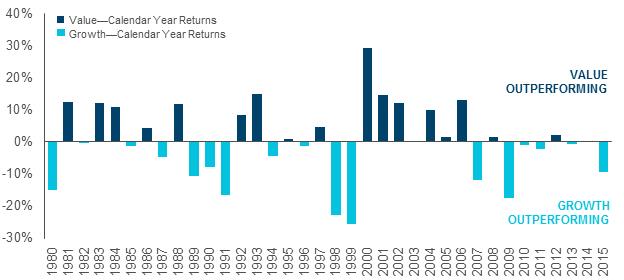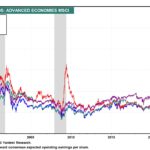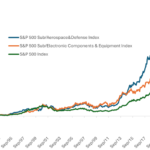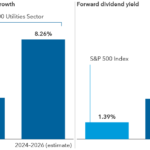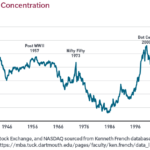Some investors may wonder whether they should own growth stocks or value stocks. Generally value stocks are stocks that are cheap compared to peers in terms of P/E ratio, P/B ratio, high dividend yield, etc. They tend to be strong and established firms with sound fundamentals. Growth stocks on the other hand tend to have the opposite of these factors. Growth companies can have high growth prospects but not-so-great fundamentals. Sometimes they are based on some fads that attract investors’ attention.
According to an article by Jeff Rottinghaus at T.Rowe Price it is better for investors to own both growth and value stocks and not one or the other. Historically the combination of two have produced better returns. In fact, the performance of growth and value stocks have varied year after year as shown in the chart below. From the article:
WHAT DOES HISTORY TELL US?
From a historical standpoint, long-term value investors have achieved superior returns to growth investors and with lower overall risk.2 However, this knowledge would have served investors poorly over the past decade, for example, as growth-oriented stocks have outperformed their value-focused counterparts by some margin.3
Indeed, data analysis highlights the fact that there is essentially zero relationship between the relative returns from growth and from value from one year to the next.
Looking back over the last 35 years, what is most immediately evident is the inconsistent and episodic nature of relative U.S. equity style-related returns. Figure 1 depicts the year-on-year relative performance of value versus growth investments, showing large swings throughout the period and displaying no discernible pattern. Indeed, sector-specific factors appear most influential in determining one style’s outperformance of another, frequently resulting in a wide divergence of relative performance. In the late 1980s/early 1990s, for example, financials sector weakness caused value to underperform growth considerably. In the late 1990s, the rapid ascent of technology-related companies saw growth sharply outperform value, before reversing completely in early 2000 in the wake of the dot-com bubble collapse. The global financial crisis severely impacted value strategies once more in the late 2000s, underperforming growth sharply as the financials sector was decimated. More recently, growth has again meaningfully outperformed value amid ongoing financials sector weakness and tumbling commodity prices while, at the same time, technology- and consumer-related names have performed well.
Click to enlarge
Source: U.S. Equities—Growth Versus Value: Not Necessarily a Case of One or the Other, Jeff Rottinghaus, T.Rowe Price
Some examples of US growth stocks are the tech companies like Facebook(FB), Amazon(AMZN), Alphabet(GOOG), Netflix(NFLX) and Apple(AAPL). Facebook for example has a P/E of over 60. Examples of value stocks are General Electric Co(GE), Kimberly-Clark Corp(KMB), Exxon Mobil Corp(XOM), etc. These stocks have lower P/E ratios compared to the tech stocks noted above and other growth stocks.
Growth stocks can also have extremely high P/E ratios are investors bid up stock prices based on high growth potential in the future. One such company is Shake Shack Inc(SHAK) which has a P/E of over 87. Conservative investors usually avoid such high-priced stocks since lack of growth can decimate the stock price almost overnight.
So in summary, investors should have both growth and value for better diversification and returns over the long-term. Simply putting too much faith in growth stocks can lead to disaster. Similarly loading up a portfolio with only value stocks can lead to under-performing the market.
Disclosure: No Positions
